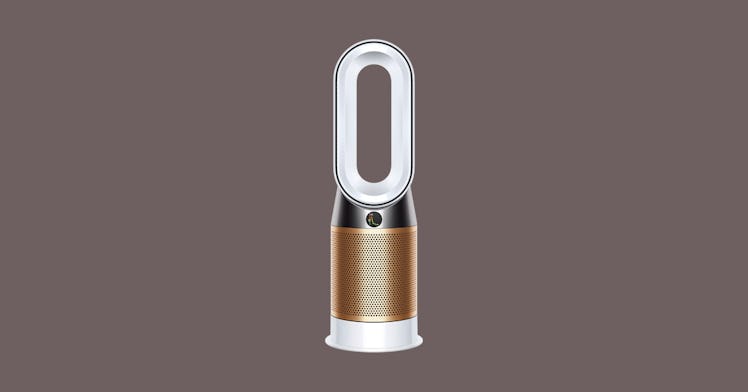Dyson’s Newest $750 Air Purifier Actually Destroys Formaldehyde
It sounds cool. But is it worth it?

The air inside your home can be up to 5 times dirtier than whatever you breathe outside. Which is one of the many reasons parents invest in air purifiers with HEPA filters. It’s a legitimate paranoia fueled by fear of invisible toxins, as well as pollen, dander, and dust. The latest and greatest presence non grata: Formaldehyde. It’s a colorless gas used in building materials and quite a few household products like paints and glues. And Dyson now has a product that aims to get rid of it.
When formaldehyde is present in the air at levels higher than 0.1 parts per million (ppm), it can cause watery eyes, burning in the throat and nose, coughing, wheezing, and skin irritation.
Let’s be clear: The most effective way to improve your indoor air quality is by opening a window and letting in outdoor air (and not with an abundance of house plants, despite what you may believe). But when that’s not an option, portable air purifiers can help. For a price. In the case of the Bluetooth-enabled Dyson Pure Hot+Cool Cryptomic HP06, make that a very high price.
So what does the very pricey Dyson do, exactly? It uses a new “cryptomic” filter that it says distills the formaldehyde. It automatically detects airborne particles and gases, then reports them in real time on its display, showing you a rather alarming red symbol that says VOC (volatile organic compounds, of which formaldehyde is but one). Seeing your air quality tracked in real time is oddly and gratifyingly addictive.
That’s handy in and of itself. As a HEPA air purifier with activated carbon filtration, it captures 99.97 percent of particles as small as 0.3 microns. As a formaldehyde bounty hunter, it detects and destroys formaldehyde, without you needing to do anything, thanks to the aforementioned filter. Plus, it heats rooms in winter and cools rooms in the summer. And as your air quality improves, you see it reflected on the Dyson display.
Now, a reality check of sorts: According to Consumer Reports, air purifiers can only remove stuff that’s in the air. They’re fairly useless when dust mites live on your pillows, for example. Or pollen is on the floor or the furniture. And “studies are inconclusive on air purifiers’ ability to tackle gases” like formaldehyde.
Of course, theres also a DIY approach that’s, well, free. The EPA suggests that you open your windows, run your air conditioner, and use a dehumidifier to reduce formaldehyde levels. And be a smart shopper by choosing composite wood products that are certified as compliant with the California Air Resources Board Composite Wood Products Airborne Toxic Control Measure. It’s a mouthful. But it’s better than too much formaldehyde.
Every product on Fatherly is independently selected by our editors, writers, and experts. If you click a link on our site and buy something, we may earn an affiliate commission.
This article was originally published on